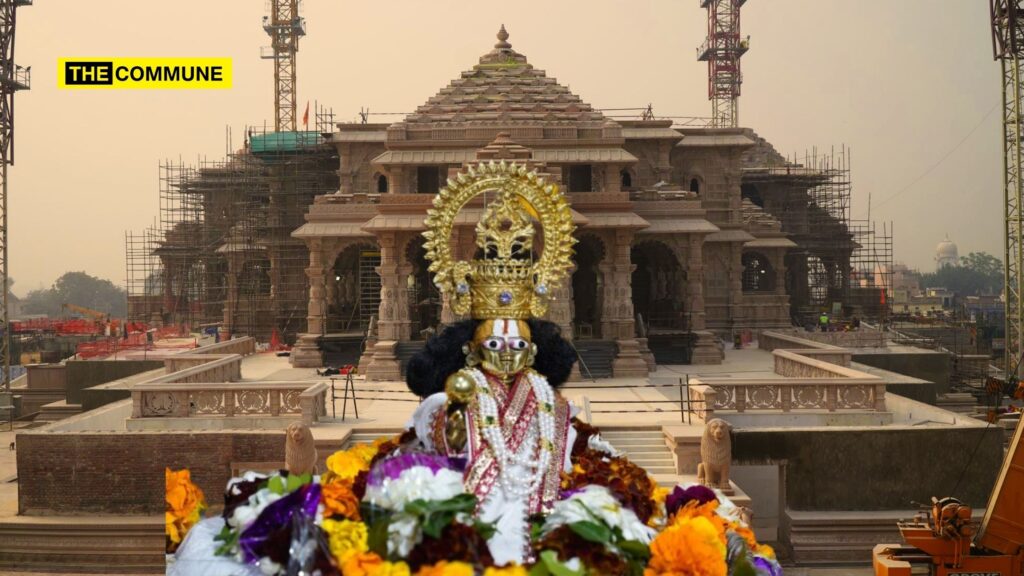While the entire nation is euphoric about Lord Ram returning to his abode in Ayodhya, a few disgruntled elements whose contribution to the cause has been next to zero, aided by the usual suspects, have gone on to cause cast aspersions about the Grand Ram Temple in an attempt to create confusion among the devoted.
But Sri Brahmasri Ganeshwar Dravid Sastri, the Vidwan of Vallabhram Shaligram Sangved Vidyalaya in Varanasi, and an expert on Vedas and Agamas, who is also associated with the Kanchi Kamakoti Peetam, has answered many questions about Ayodhya Ram Mandir Pran Prathista based on Pancharatra agamas and other Vedic texts.
Here are a few questions:
Can Prana Pratishtha be done without the entire temple complex being constructed?
One of the crucial queries revolves around whether the Prana Pratishtha can proceed without completing the entire temple complex. Brahmasri Ganeshwar Dravid Sastri unequivocally asserts that it can can be conducted when the Garbagriha is fully built.
Even in the case of Somnath Temple in Gujarat, the consecration was done after the Garbagriha was completed. The current expansive temple complex was established later.
Can Pran Pratishta be done without the Kalasham on top?
Kalasha Prathista is done only when the temple complex is fully complete and this ritual can only be conducted by a sanyasi. Performing this act as a grihastha, a householder, goes against the Shastra’s guidance and is believed to result in the individual having no descendants.
Brahmasri Ganeshwar Dravid Sastri refers the Kalasha Aaroopana Vidhi, a ritual that outlines the rules for installing the Kalasha in the temple. This commentary, authored by Sri Anna Sastri, delves into the nuances of the installation process.
When can the Pran Pratishta of a temple be done?
Before the Prana Pratishtha can take place, certain rules and rituals must be observed. According to Brahmasri Ganeshwar Dravid Sastri, the following are the requirments:
- Complete one level of construction: The temple must have at least one level of construction completed. These are based on Pancharatra Agama and Ishwar Samhita. Temples like Srirangam and the Varadaraja temple in Kanchipuram are governed by the Pancharatra agama.
- Installation of doors (golden door): Temple construction rules allow for Prana Pratishtha to take place if Kalasha Prathista has not yet occurred, provided that at least one level of the temple, along with its door, is completed. The temple doors, particularly the main entrance, should be installed.
- Vastu Puja: A ceremony to the deities associated with Vastu (architecture and construction) is performed. After the Vastu rituals, the temple doors can be opened and priests can proceed with the Prana Prathistha.
- Brahmana Bhojanam: A meal for Brahmanas (priests) is arranged.
- Vastu Shanti Homa: A Homa (sacred fire ritual) for the propitiation of Vastu deities is conducted.
- Masha Bali & Payasa Bali: Offerings of Masha (black gram) and Payasa (sweet rice pudding) are made.
All the above pujas and rules are supported by references in the Bruhan Naradiya Puranam (Narada Puranam in the 46th Adhyaya, specifically in slokas 697 and 698. It completely subscribes to the Dharma Sastra.
In conclusion, the Prana Pratishtha of Bhagwan Shri Ram Lalla in Ayodhya is a momentous occasion deeply steeped in tradition and spiritual significance.
A Thread 🧵
Vidwan of Sri Kanchi Kamakoti Preetam Sri Brahmasri Ganeshwar Dravid Sastri, 85 years priest has answered 𝐦𝐚𝐧𝐲 𝐪𝐮𝐞𝐬𝐭𝐢𝐨𝐧𝐬 𝐚𝐛𝐨𝐮𝐭 𝐀𝐲𝐨𝐝𝐡𝐲𝐚 𝐑𝐚𝐦 𝐌𝐚𝐧𝐝𝐢𝐫 𝐏𝐫𝐚𝐧𝐚 𝐏𝐫𝐚𝐭𝐡𝐢𝐬𝐭𝐚
on 𝑷𝒂𝒏𝒄𝒉𝒂𝒓𝒂𝒕𝒓𝒂 𝒂𝒈𝒂𝒎𝒂 & other Vedic texts pic.twitter.com/dGXTL8DEqn— Tinku Venkatesh | ಟಿಂಕು ವೆಂಕಟೇಶ್ (@tweets_tinku) January 15, 2024
Tinku Venkatesh is a Vaishnavite Hindu with an interest in temples, culture and politics.
Subscribe to our channels on Telegram, WhatsApp, and Instagram and get the best stories of the day delivered to you personally.

